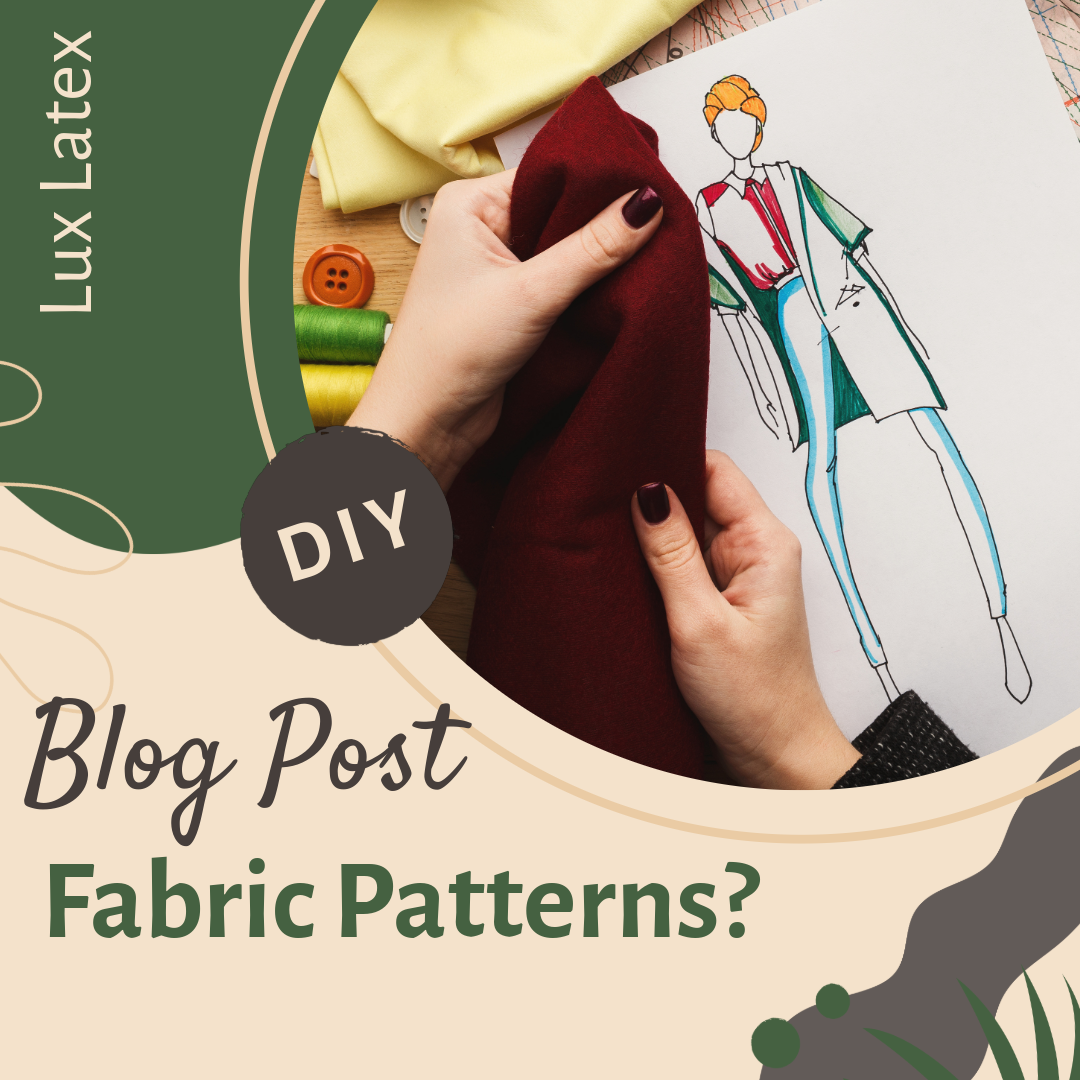
Why I Don’t Use Fabric Patterns for Latex Design
Why I Don’t Use Fabric Patterns for Latex Design
Latex pattern design is a unique process that requires a different mindset compared to working with traditional fabrics. As a designer specialising in latex couture, I often get asked why I don’t use standard fabric patterns in my work. The short answer? They simply don’t work for latex.
The Difference Between Latex and Fabric
Latex behaves very differently from woven or knitted fabrics. Unlike cotton or polyester, latex has no grain, no stretch direction (unless added intentionally through design), and no fraying edges. This means the foundational logic behind fabric patterns—drape, seam allowance, bias, and stretch—doesn’t apply in the same way. Therefore, latex pattern design must consider the material’s elasticity and response to tension, rather than its weave or fall.
Precision is Key in Latex Pattern Design
With latex, every millimetre counts. Because seams are bonded rather than stitched, there's little room for error. If a pattern piece is even slightly off, it will distort the whole garment. This is why latex pattern design involves creating patterns that are mathematically precise and tailored specifically for the body’s curves and movement. I use digital tools to draft most of my patterns, which allows for clean lines, accuracy, and repeatability.
No Need for Seam Allowance
Another reason I steer clear of traditional fabric patterns is the inclusion of seam allowances. In fabric sewing, these allowances are essential for stitching garments together. In latex pattern design, seams are bonded edge-to-edge with adhesive, not sewn, which eliminates the need for extra seam width. Using a fabric pattern would result in oversized latex pieces and an ill-fitting garment.
Creating Curves Without Darts
Latex offers incredible mouldability, so I can shape a garment without relying on darts or pleats. In latex pattern design, curves and shaping are achieved through careful panel design and strategic placement of seams. This enables smooth silhouettes and eliminates bulk, especially in body-hugging styles where precision and sleekness are crucial.
Tailored for Bonding Techniques
Because latex pieces are glued, not sewn, all patterns need to accommodate bonding techniques. This means extra attention must be given to areas of tension such as shoulders, elbows, and knees. A solid latex pattern design ensures these stress points are reinforced or shaped correctly from the start. Fabric patterns simply aren’t built with that in mind.
Custom Fit is Everything
Fit is arguably the most important factor in a successful latex garment. Because latex clings to the body, I custom-draft every pattern to match the wearer's measurements. Standard fabric patterns are designed with ease and flexibility, but latex pattern design demands close-fitting precision. Even small variances can result in discomfort or wrinkling, which is something I actively avoid through meticulous drafting.
Better Creative Freedom
Finally, not using fabric patterns frees me creatively. Rather than being limited by someone else’s pattern logic, I approach each project as a sculptural challenge. Latex pattern design allows me to rethink construction entirely—from panels and cut-outs to layering and visual symmetry. This results in pieces that are truly bespoke, dramatic, and functional for the material.
Learning Through Practice
If you’re interested in latex pattern design, the best way to learn is by doing. Start with simple forms, like a pencil skirt or basic bodysuit, and experiment with how the latex stretches and responds. Avoid using cotton patterns as templates, and instead, develop your own based on personal measurements and trial-and-error. It’s a rewarding process that sharpens your understanding of both latex as a material and your creative abilities.
Where to Get Latex for Pattern Work
I personally recommend Radical Rubber for high-quality sheeting. Their latex is consistent, vibrant, and comes in a wide range of colours and thicknesses, making it ideal for precise latex pattern design.
Conclusion
Traditional sewing patterns are designed with fabric in mind, and trying to repurpose them for latex is a recipe for frustration. Latex pattern design is a distinct discipline that rewards attention to detail, a deep understanding of the material, and a commitment to precision. By working directly with latex and developing your own design logic, you’ll create garments that are not only better fitting but also more visually striking and durable. In my experience, that’s where the real power of latex lies.